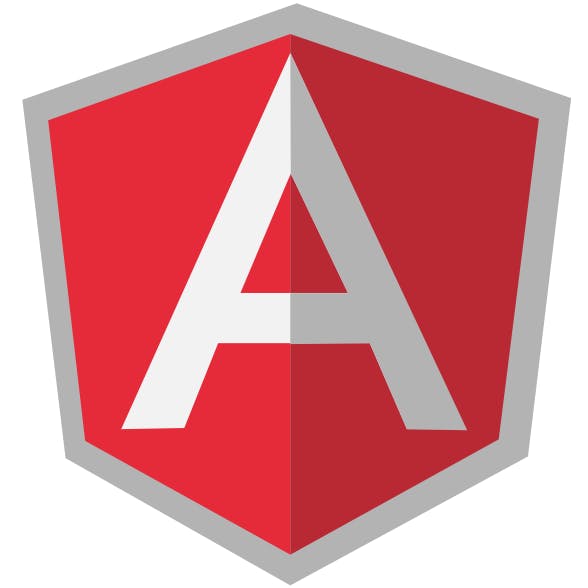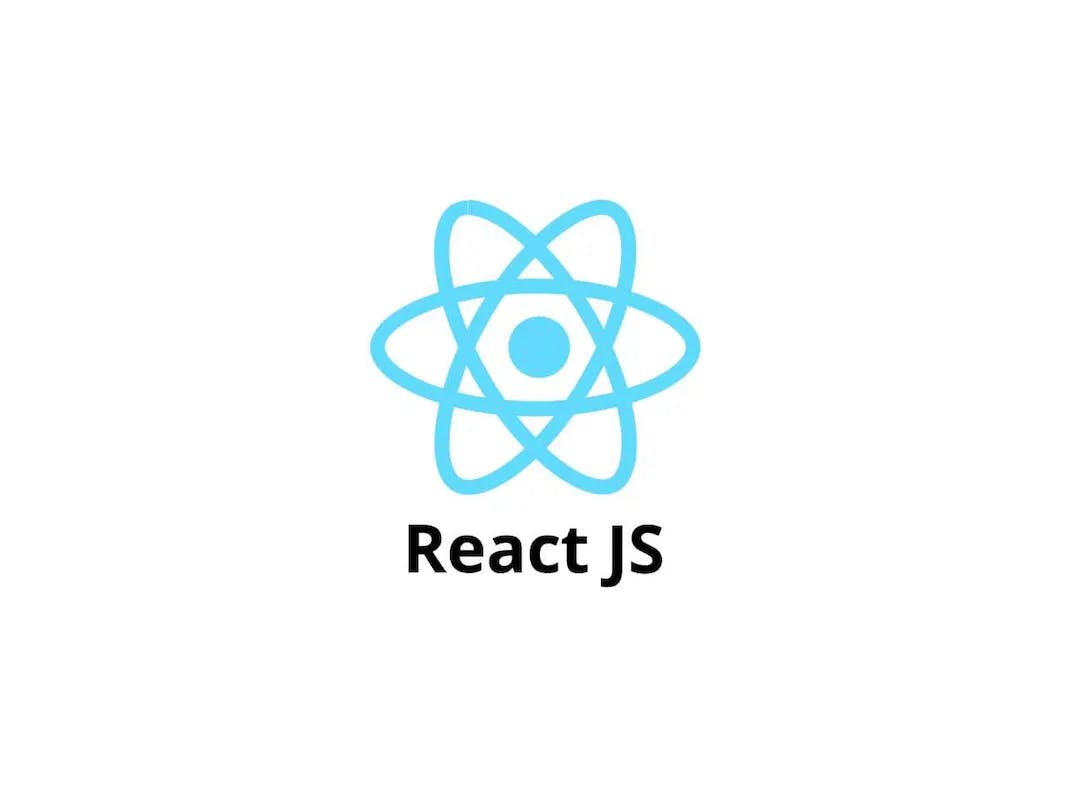
From Static Pages to Interactive Worlds: The Odyssey of Web Development
A Browser's Ballad: Mosaic to Chrome and Beyond
Table of contents
- The Spark that Ignited the Web
- The Secret Code of the Web: A History of HTML
- Pixel Revolution: 1994 - The Year CSS gave Websites Flair
- 1995: When Websites Woke up - The JavaScript Revolution
- 2006: Taming the JavaScript Jungle - jQuery to the Rescue!...
- 2010: Beyond jQuery's Grip - AngularJs Takes the Web Development Stage
- From Angular Angst to React Revolution: How a Newcomer Upstaged the Web King
- VueJS: The Third Wheel that Crashed the ReactJS and AngularJS Party (and Won Over Everyone)!...
- Angular 2: The Phoenix Awakens from the Ashes of AngularJS
- From Browser Bottlenecks to Blazing Speeds: How WebAssembly Tamed the Web Dev Wild West
- The JavaScript Upstarts: How Svelte Slipped Past the Big Three and Stitched Together a Better Web
- Forget Props and State, It's All About the Hooks: The React Revolutionary Nobody Saw Coming!...
- The JavaScript Showdown: Did Vue Composition Out-Hook React's Hooks?
- Beyond Band-Aids: Was Solid the Cure for a Multi-Framework Headache?
- From Chaos to Clarity: How HTMX Tamed the Wild West of Web Frameworks!...
- The Drama is Over: React Suspense Enters to Save the Show (and Our Sanity)
- Say Goodbye to Stores, It's All Runey from Here!...
- If Your Website Still has a Guestbook, We need to Talk (and Update ASAP)
Imagine: 1989, dial-up modems whisper secrets, and text reigns supreme. Tim Berners-Lee, a digital Odysseus, dreams of hypertext highways, paving cyberspace with HTML's humble bricks. Websites, static islands in a textual sea, blink to life. Mosaic, the digital Magellan, arrives, bringing maps and color, guiding users through labyrinthine links. Netscape and Explorer battle like titans, reshaping the digital landscape. Flash, a flamboyant jester, dances into spotlight, but stumbles, his reign brief. Java and JavaScript, the wizened oracles, weave magic with dynamic spells. Blogs and social media, Pandora's digital boxes, unleash a torrent of voices, reshaping the web with every click. Mobile screens, tiny portals, become windows to the world, demanding agility and grace. Frameworks rise, React and Angular, wielding powerful spells, but Svelte, the nimble archer, arrives whispering efficiency with minimal arrows. And the journey continues, ever evolving, a digital odyssey with no map where every line of code is a brushstroke on the ever-changing canvas of the web.
The Spark that Ignited the Web
In 1989, amidst the hum of dial-up modems and the glow of CRT monitors, a digital Odysseus named Tim Berners-Lee hatched a grand vision: a web, not of spiders, but of hypertext, woven across the globe. He conjured httpd, a server whispered into existence, and WorldWideWeb, a browser-editor that became the portal to this nascent digital empire. With nimble fingers, he forged the first threads of HyperText Markup Language, or HTML, a humble dialect that birthed hyperlinks, those shimmering pathways connecting document to document, continent to continent. His blueprints for URIs, HTTP, AND HTML became the lingua franca of the web, evolving as this digital tapestry spread, thread by shimmering thread.
Imagine it: 1989, and the world stood on the precipice of a revolution. Information, once locked in siloed databases, began to dance, linked and liberated. Knowledge, once cloistered in academia, flowed freely through hypertext rivers. This wasn't just a technological feat; it was a declaration of freedom, a promise of a world where borders were blurred, and connection bloomed with every click. So next time you navigate the bustling avenues of the web, remember the quiet heroism of Time Berners-Lee, the weaver who dreamt of a web, and with code and creativity, brought it to life. His legacy ripples with every click, a testament to the power of a single vision to reshape the world, one hyperlink at a time.
The Secret Code of the Web: A History of HTML

Imagine a world before shimmering GIFs and sleek animations, where websites were staid text boxes blinking on a black screen. This, my friend, was the dawn of HTML, a language barely a whisper in the digital wilderness of 1991. In the hands of Time Berners-Lee, a visionary with a keyboard as his quill, HTML began as a humble alphabet, crafting basic bricks of text and links. No fancy fonts, no dancing images, just pure information, yearning to connect. But the Web, like a restless child, craved more.
Pixel Revolution: 1994 - The Year CSS gave Websites Flair

Imagine the Internet in 1994: a wasteland of beige boxes filled with black text, a digital desert begging for an oasis. Then, a knight in shining code arrives - CSS! No longer were websites confined to monotonous fonts and pixelated borders. CSS donned the web in a rainbow of colours, festooned it with fancy fonts, and whispered secrets of layout and design. Websites, once dull drones, blossomed into vibrant butterflies, each page a unique canvas. Menus danced across the screen, images leapt from their digital frames, and buttons shimmered with the promise of adventure. Suddenly, the internet wasn't just a library of dust tomes; it was a playground, a kaleidoscope, a portal to a thousand dazzling worlds.
With every click, the web grew more alluring, drawing in the reluctant souls like moths to a flame. Eyes that once glazed over at endless text now sparkled with excitement as they navigated interactive menus and explored colour-soaked landscapes. The internet, once a niche for tech junkies, bloomed into a vibrant marketplace of ideas, a social space where anyone could find their tribe. And it all started with a few lines of code, a digital brushstroke that painted a million possibilities. So, the next time you marvel at the beauty and diversity of the web, remember CSS, the unsung hero who transformed the internet from a monochrome monolith into the technicolor playground it is today.
1995: When Websites Woke up - The JavaScript Revolution

1995: The year dial-up modems hummed a lullaby and pixelated landscapes dominated the digital frontier. Websites, once static portraits in a vast gallery, yearned for movement, for life. Then, like a mischievous sprite, JavaScript returned, whispering secrets of interactivity into their pixelated ears. Suddenly, button danced, menus pirouetted, and forms sprung to life, responding to users' touch with a newfound intelligence. Images morphed and shifted, revealing hidden layers of information. Websites, no longer passive displays, became playgrounds of possibility, engaging users in conversations, not just presentations.
This wasn't just a technological feat; it was a revolution. Information, once passive, became participatory. Websites, once one-way streets transformed into bustling marketplaces of interaction. Users weren't just clicking; they were playing, creating, shaping their own digital adventures. And it all started with a few lines of code, a mischievous language that breathed life into the digital canvas. So, the next time you navigate a dynamic website, remember the mischievous spirit of JavaScript, the invisible puppeteer pulling the strings behind the scenes, making the web not just a place to visit, but a place to play.
2006: Taming the JavaScript Jungle - jQuery to the Rescue!...

In 2006, a wizard named John Resig cast a spell that would forever change the realm of JavaScript. With a wave of his wand, he conjured jQuery, a magical library that tamed the wild beats of code and brought order to the chaotic jungle of web development. Before jQuery, JavaScript was tangled web of tangled webs. Developers toiled through mazes of code, battling cross-browser compatibility like knights against a hydra. But with jQuery's arrival, a new dawn broke. It whispered secrets of simplicity and elegance, transforming daunting tasks into graceful lines of code.
Like a master alchemist, jQuery distilled the essence of JavaScript, revealing its true power. It granted developers the ability to manipulate animations with a flick of the wrist, traverse the DOM like seasoned explorers, and summon AJAX requests with the ease of a whispered incantation. Websites, once burdened by sluggish interactions and cumbersome code, found new life. Buttons danced with renewed vigour, menus unfolded with fluid grace, and content flowed seamlessly, guided by jQuery's invisible hand. And so, the web breathed a collective sigh of relief. Developers rejoiced, for their labours were eased, and users marvelled at the newfound responsiveness of their online experiences. All thanks to a wizard's ingenuity and a library named jQuery.
2010: Beyond jQuery's Grip - AngularJs Takes the Web Development Stage

2010: The dawn of a web-less web. Enter AngularJS, a rogue spell woven from code, ready to shatter the shackles of a static pages.
Before Angular, websites were clunky castles, each room a separate page, demanding endless clicks and patience. But this nimble ninja of a framework promised revolution. It whispered of single-page wonderlands, where one seamless canvas held worlds of possibility. With Angular, forms danced to your fingertips, responding in real-time. Data, once locked in spreadsheets, flowed freely, binding to your will. Websites, no longer brick-and-mortar monoliths, became living tapestries, woven with dynamic directives and spells of two-way binding. Developers, weary of page-turning toil, cheered. Angular's magic simplified, streamlined, and dared them to dream. Suddenly, complex apps unfolded with ease, components snapping into place like LEGO bricks of the digital age.
And for users? The web shed its clunky cloak. Content unfolded with mesmerising fluidity, responding to every click and scroll with graceful intent. It wasn't just browsing; it was an interactive ballet, a conversation with the digital canvas. AngularJS, the spark that ignited the single-page revolution, changed the web forever. It was a story not just of code, but of imagination, of pushing the boundaries of what a website could be. So, the next time you navigate a seamless app, remember the nimble spirit of AngularJS, the rogue spell that wove a web-less web, and dared us to dream in code.
From Angular Angst to React Revolution: How a Newcomer Upstaged the Web King

In the year 2013, a tremor shook the JavaScript Kingdom. AngularJS, the once-reigning monarch, found itself grappling with a rebellion - not a bloody coup, but a quiet revolution led by a nimble upstart named ReactJS. While AngularJS ruled with a monolithic fist, building Single Page Application like intricate castles, ReactJS offered a different vision: a world of modularity, where apps were assembled from bite-sized, independent components.
Imagine this: AngularJS was like a grand cathedral, awe-inspiring but prone to cracks. ReactJS, on the other hand, resembled a LEGO city, flexible and adaptable, able to morph and expand with ease. This shift in perspective, this democratisation of app building, was music to developers' ears. Suddenly, creating dynamic web experiences felt less like scaling a mountain and more like playing with blocks. Of course, the story isn't just about usurpation. While undoubtedly chipped away at AngularJS's dominance, it also forced the old guard to evolve.
VueJS: The Third Wheel that Crashed the ReactJS and AngularJS Party (and Won Over Everyone)!...

Imagine a world where building interfaces wasn't a battle between complex frameworks and clunky monoliths. Enter VueJS, the 2014 upstart that breezed onto the scene, not to overthrow, but to simplify. While ReactJS and AngularJS wrestled with their kingdoms, VueJS, the nimble ninja, slipped through the shadows, offering a different path: the path of elegance and ease. VueJS ditched the heavyweight baggage, focusing instead on the view layer, the visual tapestry of your web app. It became the Swiss army knife of front-end development, effortlessly adapting to any project, big or small. No more wrestling with intricate configurations or learning esoteric rituals. VueJS spoke the language of developers, offering a gentle learning curve and a friendly, approachable demeanour.
But don't mistake simplicity for weakness. VueJS packs a punch under its hood, boasting a powerful reactivity system that keeps your app dancing to the beast of user interactions. It integrates seamlessly into existing projects, a welcome guest rather than a disruptive overload. And the best part? It's open-source, a gift from the developer community, constantly evolving and improving, fuelled by the collective spirit of innovation. So, next time you're building a web interface, remember the ninja in the corner. VueJS, the quiet revolutionary, waiting to weave its magic and show you that sometimes, the simplest solutions are the most powerful.
Angular 2: The Phoenix Awakens from the Ashes of AngularJS

Forget clunky castles built with bricks and mortar. Imagine sculpting your web app from living blocks, each pulsating with data and interactivity. That's the world of Angular 2, the 2016 phoenix that rose from the ashes of AngularJS. Angular 2 isn't just a bug fix, it's a tectonic shift. It ditches the monolithic structure for nimble, self-contained components that click together like Lego bricks. These components, arranged in a family tree, dance to the rhythm of user interactions, updating and adapting in real-time.
Think of it like this: AngularJS was a single, aging oak, beautiful but prone to rot. Angular 2 is a vibrant forest, each component a vibrant sapling, growing and evolving together. This modular approach makes your app lighter, faster, and infinitely more adaptable. But Angular 2 isn't just about components. It's powered by TypeScript, a language that adds superpowers to your JavaScript. No more cryptic errors or runtime headaches, TypeScript catches problems before they even sprout.
From Browser Bottlenecks to Blazing Speeds: How WebAssembly Tamed the Web Dev Wild West

Forget the Wild West of web development, where JavaScript cowboys roamed free and performance was scarce as water in a saloon brawl. Enter WebAssembly in 2017, the sheriff who rolled into town and promised order - and blazing-fast speed.
Picture this: websites lumbering like overloading wagons, bogged down by the limitations of pure JavaScript. Developers, weary of chasing gremlins and fighting performance bottlenecks, yearned for something... different. Then cam WebAssembly, a low-level, binary-speaking gunslinger, its code as compact as a six-shooter, its performance as sharp as a well-honed blade. WebAssembly doesn't play by the JavaScript rules. It speaks the language of C/C++, C#, and Rust, the tough-as-nails languages used to build high-performance software. This means websites can now harness the raw power of these languages, running alongside JavaScript like trusty sidekicks. The result? Web apps that move like greased lightning, animations that dance like saloon girls, and interactivity that punches you in the gut like a barroom brawl (but in a good way).
But WebAssembly isn't just about brute force. It's also a bridge builder, allowing these different languages to work together in harmony. Think of it as a peace treaty between the JavaScript posse and the native-language gunslingers. So, developers can now pick the right tool for the job, without getting bogged down in language wars. So, the next time you visit a website that feels like a high-noon showdown - smooth, fast, exhilarating - remember the sheriff who brought order to the web dev Wild West. WebAssembly, the gunslinger who speaks in code, is here to stay, and its impact on the future of web development in as clear as a desert sunrise.
The JavaScript Upstarts: How Svelte Slipped Past the Big Three and Stitched Together a Better Web

Image a world where web apps weren't lumbering giants, weighed down by layers of framework complexity. Enter Svelte, the 2019 upstart who whispered a revolutionary secret: "What if we skipped the runtime bloat and built lightning-fast apps from the ground up?" Unlike React and Vue, who juggle code in the browser while your app runs, Svelte is the minimalist magician. It works its magic during build time, weaving your app into lean, efficient vanilla JavaScript. The result? Apps that dance like humming birds, with bundle sizes so tiny they'd fit in your pocket.
But Svelte beauty goes beyond speed. It's the approachable friend in the tech playground. No need to wrestle with cryptic frameworks or master esoteric tools. Svelte speaks the language of classic web development - HTML, CSS, and JS, with just a sprinkle of its own charm. It's like revisiting an old friend, familiar yet refreshingly different. So, ditch the complexity, embrace the efficiency. Svelte isn't just about building apps, it's about reclaiming the joy of web development. It's a reminder that simplicity, sometimes, is the most powerful magic of all.
Forget Props and State, It's All About the Hooks: The React Revolutionary Nobody Saw Coming!...

In the year 2020, a wave of change swept through the React landscape. Hooks, like nimble acrobats, swung onto the scene, defying the laws of how React components were traditionally built. They whispered a tantalizing promise: "What if you could create dynamic, reactive components without the constraints of classes?". Imagine a world where components weren't confined to right class structures, but instead danced with the freedom of pure functions. React Hooks unlocked this potential allowing developers to harness state, lifecycle features, and more within the elegant simplicity of functional components.
It was as if React had been granted a new language, a symphony of concise code where every line sang with purpose. No more juggling this or wrestling with inheritance. Hooks offered a direct line to the heart of React's power, empowering developers to create components that were both expressive and efficient.
Functional programming, once a niche art form, found a new canvas in React Hooks. Components transformed into elegant expressions of logic and state, free from boilerplate of classes. It was as if a painter had exchanged a heavy brush for a delicate calligraphy pen, creating masterpieces with newfound finesse. The impact was profound. Hooks opened a gateway to cleaner code, easier testing, and a more intuitive grasp of React's core concepts. They weren't just a fix for React, they were a reimagining of its possibilities. And as developers embraced this new paradigm, the world of React development was forever changed.
The JavaScript Showdown: Did Vue Composition Out-Hook React's Hooks?
In 2020, a new symphony began to play in the realm of Vue.js development. The Composition API, like a virtuoso conductor, took to the stage, wielding its baton to orchestrate a more harmonious way of building components. It whispered a daring challenge to React Hooks: "What if we could create even more elegant and reusable code, composing components like a beautiful sonata?". Imagine a world where complexity melts away, replaced by a graceful dance of interconnected parts. The Vue Composition API unveils the vision, offering a toolkit for crafting components as masterful arrangements of reusable logic and state. It's like trading a paintbrush for a conductor's wand, sculpting applications with finesse of a musical maestro.
No longer are developers bound to the rigid structure of the Options API. Now, they can paint on a border canvas, weaving together reusable functions and logic as if blending melodies. Complexity bows to clarity, as components reveal their inner working in a more intuitive and expressive manner. The Vue Composition API isn't just a tweak, it's a paradigm shift. It invites developers to think in terms of composition not just options. It unlocks the power of modularity, allowing code to be shared and reused like a chorus echoing throughout an application. And as developers embrace this new rhythm, the Vue.js landscape is transformed into a symphony of clarity and elegance. This Composition API isn't a response to React Hooks, it's a bold declaration of Vue's artistry conducting a new era of development where harmony reigns supreme.
Beyond Band-Aids: Was Solid the Cure for a Multi-Framework Headache?

In the year 2020, the JavaScript kingdom trembled. A tremor, not from a new language or outlandish library, but from a whisper: "Solid." This lightweight rebel, armed with fine-grained reactivity and an efficiency laser beam, dared to challenge the established web framework giants - React, Vue, Angular, and Svelte. Think of it a master sculptor, not wrestling with clunky marble blocks, but shaping web experiences from precise, reactive grains of sand. Solid's reactive programming model is like a whisper in the wind, rippling through your app with minimal effort, triggering updates only where needed. Gone are the days of sluggish DOM manipulation, replaced by a ballet of efficient rendering, keeping your users dancing in the sweet spot of performance.
But Solid isn't just about speed. It's about developer zen. Its minimal syntax and intuitive primitives invite you to write code that's a joy to read and maintain. No more wrestling with complex frameworks or deciphering cryptic APIs. Solid speaks the language of developers, offering a gentle learning curve and a friendly handshake. So, the next time you're building a web experience, remember the whisper in the wind. Solid, the lightweight rebel with a laser focus on efficiency, might just be the key to crafting web apps that are both powerful and delightful. Forget the framework fatigue, embrace the reactive revolution. Solid might not be the "fix" for everything, but it's definitely a dance worth learning.
From Chaos to Clarity: How HTMX Tamed the Wild West of Web Frameworks!...

Imagine a world where you could create dynamic, interactive web experiences without wrestling with complex frameworks or writing mountains of JavaScript. Introducing HTMX: a deceptively small library that's turning the web development world on its head. HTMX steps onto the scene as a stealthy ninja, ready to slice through the clutter of modern web development. It whispers, "What if you could harness the raw power of HTML to build lightning-fast, responsive interfaces without sacrificing simplicity?"
With just a sprinkle of special attributes, HTMX unlocks superpowers within your humble HTML, granting you direct access to AJAX, CSS Transitions, WebSockets, and Server Sent Events. It's like discovering a hidden cheat code that unlocks a whole new level of web development mastery. No longer bound by the constraints of traditional frameworks, you're free to create dynamic experiences directly within your markup. Imagine forms that submit without page reloads, content that updates seamlessly, and real-time data flowing effortlessly—all achieved with a few elegant lines of code.
HTMX doesn't demand allegiance to a single framework; it's the ultimate team player, happy to collaborate with your existing tools and workflows. It's the secret weapon that elevates your web applications to new heights of performance and user experience, all while keeping your codebase lean and maintainable. Are you ready to embrace the minimalism and power of HTMX? Prepare to be amazed as you rediscover the untapped potential of HTML. It's time to unlock a new era of web development, where simplicity reigns supreme and interactivity flows freely.
The Drama is Over: React Suspense Enters to Save the Show (and Our Sanity)

In the realm of React, a new hero has emerged, wielding the power to control the chaos of asynchronous data and usher in an era of seamless user experiences. Meet React Suspense - The master of delayed gratification and the guardian of smooth rendering. Imagine a world where your React apps gracefully anticipate data's arrival, gracefully pausing their rendering dance until every piece is perfectly in place. No more jarring loading states, no more awkward placeholders - just a harmonious flow of content that unfolds before your users' eyes, as if by magic.
With Suspense at your fingertips, you can now orchestrate asynchronous operations with the finesse of a symphony conductor. Components patiently awaits their cues, suspending rendering until their dependencies are met. This ballet of data and rendering unfolds behind the scenes, leaving your users captivated by a seamless experience. Gone are the days of wrestling with complex state management and error boundaries. Suspense empowers you to write cleaner, more intuitive code, effortlessly coordinating data fetching and rendering with a few elegant declarations.
Whether you're crafting lightning-fast data grids, building dynamic user interfaces, or crafting immersive interactive experiences, React Suspense is your trusted ally. It's time to unlock the true potential of React, embracing a world where asynchronous data flows effortlessly, and user experiences reach new heights of fluidity and delight.
Say Goodbye to Stores, It's All Runey from Here!...
Forget clunky stores and cryptic APIs, Svelte is embarked on a bold journey of evolution with Runes. Arriving with version 5, Runes whisper a seductive promise: to weave pure magic into your HTML, making it sing with reactive elegance. Imagine a world where data flows seamlessly through your markup, effortlessly updating your UI without a single store declaration or lifecycle hook. Runes become invisible companions, whispering instructions directly to the Svelte compiler, transforming your components into dynamic chameleons.
Think of SolidJS signals, distilled down to their essence and reborn in Svelte's embrace. Gone are the days of wrestling with complex state management, replaced by a whisper-light touch that empowers your markup to dance with data. But Runes are more than just a mimicked melody. They are Svelte's own revolution, pushing the boundaries of declarative development beyond imagination. Get ready to code with newfound freedom, where simplicity meets unparalleled reactivity, and your UI pirouettes to the rhythm of your data. This isn't just a fix, it's a leap. Svelte Runes are a siren song for developers longing for a more elegant, intuitive way to build web experiences. Are you ready to answer the call and unlock the hidden potential of your HTML?
If Your Website Still has a Guestbook, We need to Talk (and Update ASAP)
Ah, the eternal battle of the web frameworks! Where Angular struts in like a knight in shining armor, Svelte dances in with a mischievous wink, and jQuery, well, jQuery just shows up with a dusty toolbox and says, "Hold my coffee, kids, I got this." It's true, websites nowadays are a technicolor wonderland compared to the dial-up days of yore. Facebook dances with React, Deutsche Bank waltzes with Angular, and everyone else is left wondering - are these fancy new dance moves really necessary when jQuery's still doing the square dance just fine?
Think of it like this: frameworks are the gourmet chefs of the web, whipping up intricate dishes with a thousand ingredients. jQuery, meanwhile, is your grandma in the kitchen, slinging together comfort food with three ingredients and a whole lot of love. Both get the job done, but one leaves you with a Michelin-star experience, the other with a warm hug and a belly full of mashed potatoes. So, are the new frameworks useless? Not entirely. They're like fancy sprinkles on the jQuery cupcake - adding bells and whistles, making things more modular, and maybe even saving you some time kneading the dough. But for some websites, those sprinkles are just overkill. A simple buttercream frosting (courtesy of jQuery) does the trick just fine.
So, raise a glass (or a mug of coffee, as jQuery would prefer) to the workhorse of the web. Yes, it's got a bit of mileage on it, but it still runs like a champ, proving that sometimes, the classics just never go out of style. And who knows, maybe one day those fancy new frameworks will learn a thing or two from grandma's secret ingredient - sheer, unadulterated web-slinging ingenuity. Remember, in the end, it's not about the framework, it's about the website you build. So whether you're wielding the Excalibur of Angular or just a trusty spatula of jQuery, keep building, keep innovating, and keep the web a delicious, diverse buffet of experiences. Bon appétit!

